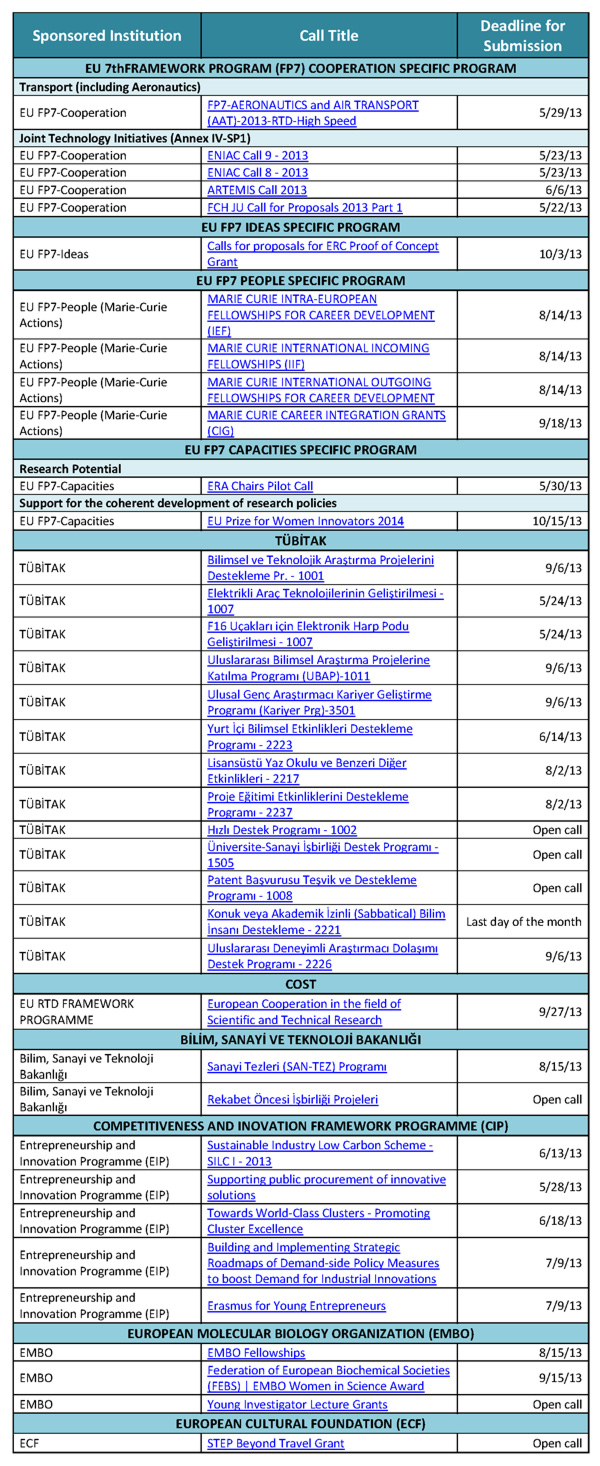Crossing the Bridge –May 2013
By Nilay Papila, PhD
TUBITAK-NSF BILATERAL COOPERATION PROGRAM
As longstanding and close allies, Turkey and the US have signed a number of scientific cooperation agreements in the past. In this issue, we are sharing the most recent framework agreement at the governmental level via our article regarding to the “Turkey- US Science and Technology Cooperation Meeting”, which was held last month in Ankara, Turkey.
At the meeting, one of the most commonly suggested funding mechanisms to support scientific collaboration between the two countries was “TUBITAK-NSF Bilateral Cooperation Program” started in 1996. Since 1996, NSF and TÜBİTAK have co-funded many selected projects.
In this article, we will share the details of ways of getting funding from TUBITAK-NSF Bilateral Cooperation Program. The following list summarizes the steps on how to develop and submit a TUBITAK-NSF Bilateral Cooperation Project in cooperation with your colleagues in Turkey.
To initiate a TUBITAK-NSF Bilateral Cooperation Project, the first step is to contact with your collaborators in Turkey and agree on a research topic. The dates for application announced by NSF should be considered while the call is always open for application to TUBITAK. Hence the researchers should check with NSF calls for proposals. There are two different types of this grant:
• International travel grant, which provides support only for travel expenses within the framework of the project grant
• International research grant, which allows you to purchase small equipment, software, consumables, travel and other project expenses.
• If research grant is considered, the mechanism works like you are building a consortium and writing a consortium project, which means you should have a single joint work plan and work packages listing.
• The next step is to define the roles of each partner considering the work package listing within the timeline of the project.
• Turkish partner writes a proposal to TÜBİTAK “Bilateral and Multilateral Relations Division” under TÜBİTAK “International Cooperation Department” and in parallel Partner in the US submits a proposal to the relevant unit of NSF, which is the Office of International Science and Engineering –OISE.
• Before submitting an application, researchers of the US institutes affiliations should get in touch with the project manager/officer of the relevant unit of OISE.
• Project duration is usually up to 3 years.
• To get the funding, the proposal should get accepted by both parties, TÜBİTAK and NSF.
Further information on the program can be found at:
www.tubitak.gov.tr/tr/kurumsal/icerik-uluslararasi (in Turkish)
www.nsf.gov/pubs/2009/nsf09004/nsf09004.jsp?org=NSF
UPCOMING CALLS FOR PROPOSALS
